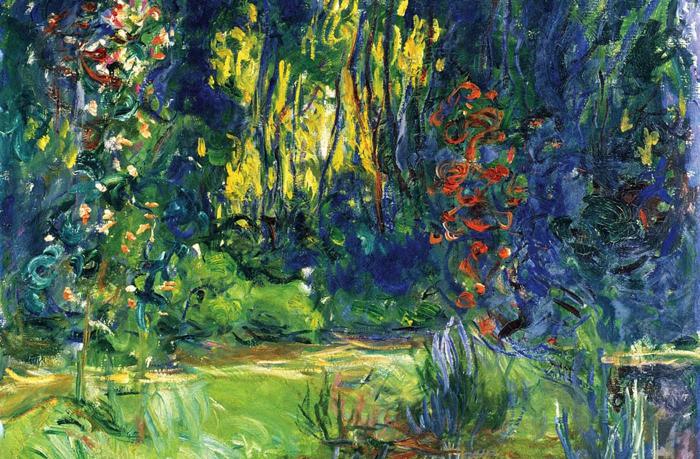People discuss my art and pretend to understand as if it were necessary to understand, when it’s simply necessary to love. — Claude Monet
Salmiya’s High Street was once considered equivalent to the Champs-Élysees. It was a street bursting with life, shoppers walking purposefully purchasing the latest trends fashion had to offer, children slurping Softy ice creams, families snacking in fast food joints like Hungry Bunny (which closed down and was later replaced by Burger King), Pizza Hut, Hardee’s. It became our family tradition to dine at Chicken Tikka after a shopping spree. That particular branch stands out in my memory very clearly. We’d always sit upstairs in the Family section and pile our plates with the salad we so loved and then gorge on the restaurant’s specialty, chicken tikka.
Oddly enough, it was here that I discovered a latent appreciation for art.
The restaurant’s walls were adorned with a few small prints that I guessed were probably renowned paintings, even though I had no idea who painted them. There was one that was very special to me. It was a simple scene—a bridge over a pond that was strewn with lily pads, with bulrushes on its perimeter and frondescence overhead. I was captivated ever since I first set eyes on it; it was the most beautiful piece of art my ten year old self had ever set eyes on.
The serenity and beauty it depicted mesmerized me. The tinge of romanticism struck me at the time and I’d picture myself walking on that bridge, drinking in the delicious hues around me. I would lose myself in it and gaze at it all through dinner every time we were there.
There was no Google image search at the time, heck there wasn’t even any home internet. I had no way of finding out the name of the painting that held me spellbound, and no means for me to take it with me. The memory was all I had.
A few years later, my mother bought me a series of books on celebrated artists and their work. From among Titian and Turner, I finally learnt the name of the elusive painter, Claude Monet, and his enchanting piece, The Lily Pond. I also discovered a number of his other works, including Water Lilies and that the inspiration to the artwork was his own pond and garden that he built at his estate in Giverny. He painted over 250 versions of Water Lilies with the garden as his muse, and each stunning piece differs in light and colour. It’s probably why he said: “My garden is my most beautiful masterpiece.” I longed to see his work.
Last summer during a week-long stay in Munich, I learnt that a Monet hung in the city’s Neue Pinakothek Art Museum. ‘Tis strange how Fate works to fulfil old longings. I hadn’t intended to visit the art museum; I was just exploring, taking sights in my stead. Lo and behold, Fate makes her move and a childhood fantasy is realized.
Upon gaining entry, I raced through several rooms, glancing at the priceless Klimts, Hodlers and Corinths that I passed along the way, not giving them the attention they were due. My eyes thirsted for Monet.
And there it was. One of the Water Lilies. I was taken aback by its size.
The beauty and simplicity took my breath away. I felt my knees crumble beneath me and my eyes moisten. The striking tones of blue; the glimpses of the reflection of lush verdure from between the lily pads; the deft, masterful strokes. It may not have been the painting that caught my fancy as a child, but the same hand painted this. I never had any inkling as to how strongly it would affect me. No photograph could ever capture those perfect shades; no book could do it justice. I have no background in art save for a few childhood sketches and very little knowledge of art history. But even an art simpleton like me could comprehend that I stood before one of the most beautiful objects ever created by Man.
At that moment, I fully understood the meaning of contentment.











